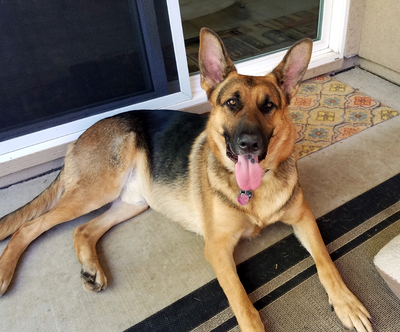More Than One-Third of Animal Collisions Occur During Fall
 |
WOODLAND HILLS, CA - September 8, 2016: New data from the Farmers Insurance® Seasonal Smarts Digest shows that more than one-third (36 percent) of all auto claims that result from animal collisions occur on American highways between September and November.
The data highlights the impact of animal migration patterns, especially among larger animals like deer and elk. Animal collisions increase by 67 percent during the fall as compared to the three months prior (June through August). Farmers Insurance data shows that animal collisions are on the rise—fall claims increased 2 percent in 2015 compared to 2014.
"The biggest potential hazard drivers should be on the lookout for in fall doesn't have four wheels, it has four legs," said Paul Quinn, head of claims customer experience for Farmers Insurance. "While drivers should always be aware of other cars and pedestrians while they're on the road, the onset of fall means drivers need to be on high alert for animals on and around the road, especially larger animals like deer and elk that can total a vehicle if struck at a high speed."
Quinn offers the following tips for drivers who may live in areas where animals may be on the move this fall:
- Tune the radio, set the GPS, and put away your cell phone before you pull out of the driveway to eliminate as many distractions as possible.
- Wildlife is often most active at dusk and dawn, according to the Colorado Parks Department, and the limited light during these times may make it more difficult for drivers to spot animals in the road. If you can, plan your drive for daylight hours to reduce the risk of an animal collision.
- Slow down—driving too fast decreases your reaction time should an animal or a person cross in front of your vehicle.
- Use the middle lane if you're on a multilane road. This will give you more time to spot an animal that is trying to cross ahead of you.
- If you hit an animal, pull over and call local law enforcement. In some states, there are special requirements regarding animal collisions. Once home, check with your department of motor vehicles to make sure you've covered all your bases.
Be on the Watch for Halloween Driving "Tricks"
Fall is the home to one of America's favorite holidays—Halloween—that brings out trick-or-treaters across the nation. Even though only one-quarter (24 percent) of all claims related to a driver hitting an object or pedestrian are filed in fall, Halloween jumps out as a day with elevated risk of an accident.
Farmers® data shows that collisions on Halloween increase by approximately 15 percent over the same day of the week just one week prior to the holiday. Drivers should take extra care when on the roads on Oct. 31, especially if your route takes you through neighborhoods.
"Whether you're on your daily commute, heading to Grandma's house for the holidays or driving your kids between trick or treat destinations, drivers should be on the lookout for some of fall's unique driving challenges," Quinn said.
The season's "first frost," which contributes to one-third (33 percent) of all multiple vehicle chain collisions, is up 46 percent over the warmer summer months. These accidents have been on the rise, too, increasing 9 percent in 2015 over the same time period in 2014.
Quinn offers the following tips to help drivers avoid some of the more common types of auto accidents during the fall, as well as tips on what drivers should do if they are involved in an accident:
- Heavy foot traffic due to school being back in session and the Halloween season can make navigating your car through crowds difficult. If possible, consider walking or biking to school and other fall activities.
- As schools across the country head back for the fall, portions of your route to work could convert to school zones during certain hours of the day. Be alert for school zones, obey the speed limits, watch for children in the street, and pay attention to school buses.
- Approximately 60 percent of adults report doing other activities while walking, such as texting, emailing, or listening to music. When driving near a pedestrian, try to catch his or her eye before turning, going through a stop sign, or otherwise crossing paths.1
- Keep an eye out. If you hit a pedestrian, stay calm, pull over, put on your emergency blinkers, call the police and, if needed, medical personnel.
The complete Farmers Seasonal Smarts Digest, detailing fall's common and uncommon hazards as well as safety and preparedness tips to help keep drivers and their cars safe, can be found online at http://www.farmers.com/news/seasonal-smarts.
About the Farmers Seasonal Smarts Digest
The Farmers Seasonal Smarts Digest is released four times per year to provide drivers and homeowners with knowledgeable, straightforward and proactive tips to help mitigate potentially dangerous and costly insurance losses. The digest examines a three-year window (2013 to 2015) of Farmers Insurance's historical claims database to identify seasonal perils and the states where they most commonly occur.
About Farmers Insurance
"Farmers Insurance®" and "Farmers®" are tradenames for a group of affiliated insurers providing insurance for automobiles, homes and small businesses and a wide range of other insurance and financial services and products. Farmers Insurance is proud to serve more than 10 million households with over 19 million individual policies, across all 50 states, through the efforts of more than 48,000 exclusive and independent agents and approximately 21,000 employees. Farmers Insurance Exchange®, the largest of the three primary insurance insurers that make up Farmers Insurance, is recognized as one of the largest U.S. companies on the 2016 Fortune 500 list.


